Photo



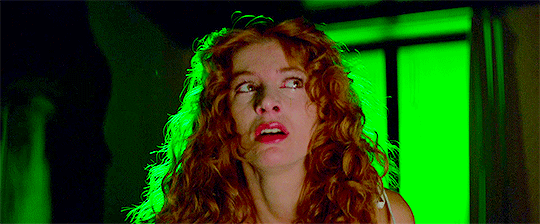

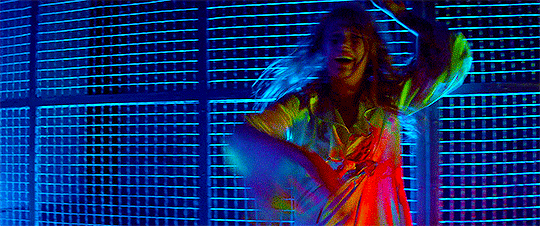

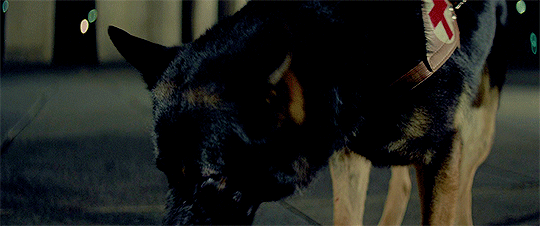
Hell is behind that door! You’re going to meet death now.
3K notes
·
View notes
Text
VIDEO FUCKING NASTIES
1980′s - 2010′s
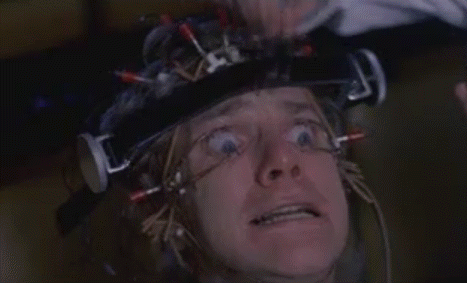
The term was first used in The Sunday Times.
In the late 1970′s, home video started to gain popularity in the UK.
“Appalling and utter filth”. -Mary Whitehouse
Political and historical context
Margaret Thatcher (Prime Minister).
Mary Whitehouse (Activist).
Clean up TV pressure group.
National Viewers and Listeners Association.
Graham Bright (MP).
Video Recordings Act 1984.
The Daily Mail (Newspaper).
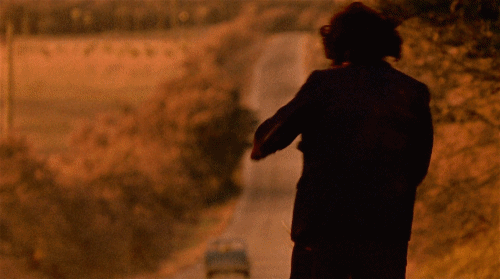
Earlier moral panics
Horror / comics in the 1950′s.
Pop / Rock music in the 1960′s.
Explicit literature in the 1960′s.
Moral panics: media effects
James Bulger Murder (1993) Child’s Play 3.
Columbine High School Massacre (1999) Marilyn Manson and Doom.
Sandy Hook Elementary School Shooting (2012) Call of Duty.
Stoneman Douglas High School Shooting (2018) The Dark Knight Rises.

Who is being protected ?
The working class ? (uneducated people).
Women ? (fuels “sexual psychopathic fantasies”).
Children ? (attacks the emotions of the young).
Filmography (all links to trailers on YouTube)
-Child’s Play 3 (1991) Dir. Jack Bender.
-The Dark Knight Rises (2012) Dir. Christopher Nolan.
Recommended viewing (all links to trailers on YouTube)
-The Texas Chainsaw Massacre (1974) Dir. Tobe Hooper.
-The Hills Have Eyes (1977) Dir. Wes Craven.
-Friday the 13th (1980) Dir. Sean S. Cunningham.
-Prom Night (1980) Dir. Paul Lynch.
Early fucking cinema (here)
The fucking cinema of attraction (here)
Narrative fucking continuity/integration (here)
Silent fucking comedies (here)
German fucking expressionism (here)
Soviet fucking montage (here)
Film fucking noir (here)
Hollywood fucking melodrama (here)
Direct fucking cinema and cinéma fucking vérité (here)
Fucking documentary (here)
#ihatescriptwriting#film history#film historians#doing film history#film studies#video nasty#video nasties#texas chainsaw massacre#the hills have eyes#friday the 13th#prom night#child's play 3#the dark knigth rises
12 notes
·
View notes
Text
FRENCH FUCKING IMPRESSIONISM
1920′s - 1930′s

World War I
French economy was devastated.
Film production capacity was seriously depleted.
France lost international markets to the US.
American, German and British films began to dominate the French market.
The two big pre-war French production companies, Pathé and Gaumont, retreated into distribution and exhibition.
“There is cinema before and after La Roue (1923) as there is painting before and after Picasso”. -Jean Cocteau
Film trends of the 1920′s
French cinema is known for its connection to realism films; realist films shot on location.
Historical epics / fantasy films / comedies / serials.
Surrealism (avant-garde).
“Impressionist” films;
Some made on a shoe string.
Others made on a vaste budget.
Most impressionist filmmakers moved between commercial ventures and personal, experimental projects.
Several formed their own production compagnies.
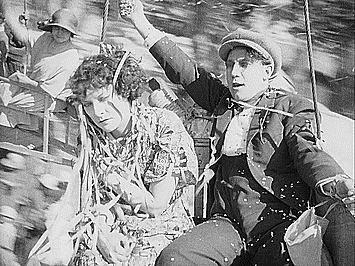
Impressionism can be confusing
Cinematic impressionism is NOT related to the late 19th century painting movement.
In cinema it designates a group of innovative filmmakers working from the end of WWI to the coming of sound.
Technical innovators who saw cinema as a means of expression akin to writing and painting.
Key impressionist filmmakers
Louis Delluc
Abel Gance
Dimitri Kirsanoff
Jean Epstein
Germaine Dulac
Marcel L’Herbier.
Louis Delluc and the ciné-club (film society) movement
Birth of sophisticated form of criticism and theory.
Louis Delluc edited and wrote for various film journals advocating that cinema is a true art form.
Part of Cinéma & Cie and Photogénie.
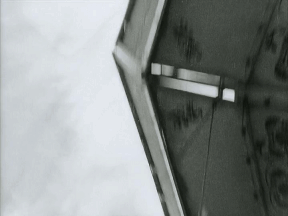
Key characteristics
Location shooting is restrained, natural acting is preferred.
Emphasis on communication of emotions, feelings and impressions.
Evocation of character subjectivity via the depiction of thoughts.
Exploration of character’s mental states and emotions.
Stylistic paradigm
Camerawork;
Camera distance; close-up (as synecdoche, symbol or subjective image).
Camera angle; high or low.
Camera movement; independent of subject, for graphic effects, point of view.
Mise-en-scène;
Lighting; single source, shadows indicating off-screen actions, variety of lighting situations.
Décor.
Arrangement and movement of figures in space.
Optical devices;
As transitions.
As magical effects.
As emphasizing significant details.
As pictoral decoration.
As conveyors of abstract meanings.
As indications of objectivity (mental images, semi-subjective images, optical subjectivity).
Characteristic editing patterns;
Temporal relations between shots (Flashback or fantasy).
Spatial relation between shots (synthetic, glance/object, crosscutting).
Rhythmic relations between shots.
Photogénie
Specific to cinema.
Different perspective.
Relation to Kino-Eye ?
“Any aspect of things, beings or souls whose moral character is enhanced by filming reproduction”. -Jean Epstein
Filmography (all links to full movie on YouTube)
-La Roue (The Wheel) (1923) Dir. Abel Gance.
Sources
-David Bordwell, French Impressionist Cinema Culture Dissertations (book).
Recommended viewing (all links to full movie on YouTube)
-Coeur Fidèle (Faithful Heart) (1923) Dir. Jean Epstein.
Early fucking cinema (here)
The fucking cinema of attraction (here)
Narrative fucking continuity/integration (here)
Silent fucking comedies (here)
German fucking expressionism (here)
Soviet fucking montage (here)
Film fucking noir (here)
Hollywood fucking melodrama (here)
Direct fucking cinema and cinéma fucking vérité (here)
Fucking documentary (here)
#ihatescriptwriting#film history#film studies#film historians#doing film history#french impressionism#jean epstein#louis delluc#abel gance#coeur fidèle
4 notes
·
View notes
Text
NEW FUCKING HOLLYWOOD
1960′s - 1980′s

Based on ‘Old Hollywood’.
The studio system consisted of Paramount Pictures, Metro-Goldwyn Mayer, Fox, Radio Keith Orpheum and Warner.
The staff was contracted.
High volume of turnover of product.
Practice of block and blind booking.
Vertical integration
Production
Distribution
Exhibition.
Controls all stages of the supply of films.
Distinguishes the majors from the minors.
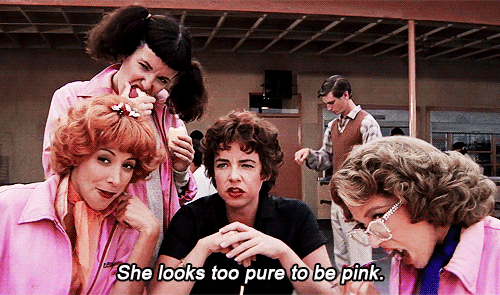
Vertical disintegration
The Paramount Decree comes to court in 1948.
The industry is found to operate as a monopoly.
Studios must divest themselves of their exhibition arms.
‘New’ Hollywood
The classical era of Hollywood becomes more fragmented;
Rise of “the teenager” and youth audience.
An era of cultural and political strive and activism.
New technologies evolving.
Popularisation of European cinemas.
New breed of filmmakers emerging.
Spurt of smaller, lower-budget, more personal films.

Recommended viewing (all links to trailers on YouTube)
-The Graduate (1967) Dir. Mike Nichols.
-Bonnie and Clyde (1967) Dir. Arthur Penn.
-2001: A Space Odyssey (1968) Dir. Stanley Kubrick.
-Rosemary’s Baby (1968) Dir. Roman Polanski.
-Grease (1978) Dir. Randal Kleiser.
-E.T. The Extra-Terrestrial (1982) Dir. Steven Spielberg.
-Tron (1982) Dir. Steven Lisberger.
Early fucking cinema (here)
The fucking cinema of attraction (here)
Narrative fucking continuity/integration (here)
Silent fucking comedies (here)
German fucking expressionism (here)
Soviet fucking montage (here)
Film fucking noir (here)
Hollywood fucking melodrama (here)
Direct fucking cinema and cinéma fucking vérité (here)
Fucking documentary (here)
#ihatescriptwriting#film history#film historians#doing film history#film studies#new hollywood#the graduate#bonnie and clyde#2001 a space odyssey#rosemary's baby#grease#et the extra terrestrial#tron
3 notes
·
View notes
Text
FUCKING DOCUMENTARY
1920′s - ???

Every film is a documentary but documentary is regularly defined as opposite to fiction.
“Documentaries offer use a likeliness or depiction of the world that bears a recognizable familiarity”. -Bill Nichols
Types of documentaries
Poetic
Expository
Observational
Reflexive
Performative
Participatory.

Recommended viewing (all links to trailers on YouTube)
-Nanook of the North (1922) Dir. Robert J. Flaherty.
-Les Maîtres Fous (1956) Dir. Jean Rouch.
-Dont Look Back (1967) Dir. D.A. Pennebaker.
-Paris is Burning (1991) Dir. Jennie Livingston.
Early fucking cinema (here)
The fucking cinema of attraction (here)
Narrative fucking continuity/integration (here)
Silent fucking comedies (here)
German fucking expressionism (here)
Soviet fucking montage (here)
Film fucking noir (here)
Hollywood fucking melodrama (here)
Direct fucking cinema and cinéma fucking vérité (here)
New fucking Hollywood (here)
#ihatescriptwriting#film history#film historians#doing film history#film studies#documentary#les maîtres fous#dont look back
2 notes
·
View notes
Text
DIRECT FUCKING CINEMA AND CINÉMA FUCKING VÉRITÉ
1950′s - ???

Introduction of new cameras and sound equipment.
End of 1950′s; handheld cameras in sync with tape recorders, easier to follow people around and zoom in.
“Sound and camera strolled hand in hand for the first time”.
Documentary entered a new phase as it could enter new places.
Hollywood cinema used to be post synced.
Handheld cameras used to be held on shoulders because they were too heavy.
The capitals of cinéma vérité were; Ottawa, New York and Paris.
People being filmed had to ignore the camera (fly on the wall).
Are people acting in front of the camera ?

Recommended viewing (all links to trailers on YouTube)
-Chronique d’un Été (Chronicle of a Summer) (1960) Dir. Jean Rouch and Edgar Morin.
-Dont Look Back (1967) Dir. D.A. Pennebaker.
Early fucking cinema (here)
The fucking cinema of attraction (here)
Narrative fucking continuity/integration (here)
Silent fucking comedies (here)
German fucking expressionism (here)
Soviet fucking montage (here)
Film fucking noir (here)
Hollywood fucking melodrama (here
Fucking documentary (here)
New fucking Hollywood (here)
#ihatescriptwriting#film history#film historians#doing film history#film studies#direct cinema#cinéma vérité#chronicle of a summer#dont look back
0 notes
Text
HOLLYWOOD FUCKING MELODRAMA
1930′s - 1940′s

v Negative connotations v
Judgmental < > Pejorative use
Historical context
Greek tragedy, 18th century, 19th century theater.
French revolution, industrial revolution, rise of modernism and capitalism.
Depends on piano and orchestral accompaniment.
Has come to stand for overwhelming, unrealistic and over-the-top.
“50′s melodrama are actually among the most socially self-conscious and covertly ‘Anti-American’ films ever produced by Hollywood studios”.
-James Chapman

Melodrama and its visual rhetoric
Highly stylised mise-en-scène.
Hyperbole / extravagance / irony / excess.
Manichean structure; sense of fundamental bipolar contrast and clash.
Explicit expression of morale judgement of the world.
Film studies and 1970′s critical re-evaluation of melodrama
These films had traditionally not merited much critical interest.
Known as ‘weepies’, ‘tearjerkers’, grouped as ‘women’s films’.
Marxist and feminist approaches are adopted to psychoanalytically analyse those films.
Rather than merely endorsing the institutions of the family and patriarchy, melodrama reveals their flaws.
Recommended viewings (all links to YouTube)
-Caught (full movie) (1949) Dir. Max Orphüls.
-All That Heaven Allows (full movie) (1955) Dir. Douglas Sirk.
-Written on the Wind (full movie) (1956) Dir. Douglas Sirk.
-Cat on a Hot Tin Roof (full movie) (1958) Dir. Richard Brooks.
-East of Eden (trailer) (1955) Dir. Elia Kazan.
-Bigger Than Life (trailer) (1956) Dir. Nicholas Ray.
-Harlow (trailer) (1965) Dir. Alex Segal.
-Far From Heaven (trailer) (2002) Dir. Todd Haynes.
Early fucking cinema (here)
The fucking cinema of attraction (here)
Narrative fucking continuity/integration (here)
Silent fucking comedies (here)
German fucking expressionism (here)
Soviet fucking montage (here)
Film fucking noir (here)
Direct fucking cinema and cinéma fucking vérité (here)
Fucking documentary (here)
New fucking Hollywood (here)
#ihatescriptwriting#film history#film historians#doing film history#film studies#caught#all that heaven allows#written on the wind#cat on a hot tin roof#east of eden#bigger than life#harlow#far from heaven#hollywood melodrama
0 notes
Text
FILM FUCKING NOIR
1940′s - 1950′s
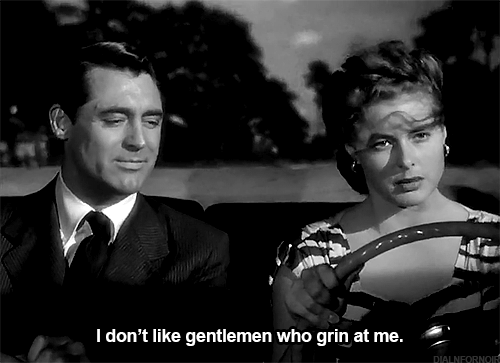
Origins in post-war pulp fiction.
Adjustments to post-war society.
Claustrophobia
Paranoia
Despair
Existencialism
Fatalism
Urban decay
Corruption
Working class/social injustice
Nihilism.
Anti traditional lighting and camera
Shadow and darkness (the mysterious and unknown).
Constant opposition of areas of light and dark.
Night-for-night as an extensive component.
Designed to unsettle, jar, alienate.
Frame is often disruptive and unnerving.
Unsettling variation on traditional shot.
Women
Femme fatale.
Menace.

Historical context
World War I & II.
Communist paranoia.
House Un-American Activities Committee.
Censorship, Motion Picture Production Code (Hays Code).
Age of anxiety.
View of the world
Duality of characters.
Mistrust of women.
Flawed characters.
Morality.

Double Indemnity (1944)
Screenplay based on a novel.
Relation to the Hays Code; crime doesn’t pay.
The quintessential film noir.
Visual aesthetic
Disorientation of spectator.
Dutch angles.
Extreme high/low angles.
Lighting.
Filmography (link to full movie on YouTube)
-Double Indemnity (1944) Dir. Billy Wilder.
Recommended viewing (all links to full movies on YouTube)
-Shadow of a Doubt (1945) Dir. Alfred Hitchcock.
-Detour (1945) Dir. Edgar G. Ulmer.
-Notorious (1946) Dir. Alfred Hitchcock.
-Gilda (1946) Dir. Charles Vidor.
-The Killers (1946) Dir. Robert Siodmak.
-The Naked City (1948) Dir. Jules Dassin.
-White Heat (1949) Dir. Raoul Walsh.
-D.O.A. (1950) Dir. Rudolph Maté.
-The Hitchhiker (1953) Dir. Ida Lupino.
-Kiss Me Deadly (1955) Dir. Robert Aldrich.
-The Night of the Hunter (1955) Dir. Charles Laughton.
Early fucking cinema (here)
The fucking cinema of attraction (here)
Narrative fucking continuity/integration (here)
Silent fucking comedies (here)
German fucking expressionism (here)
Soviet fucking montage (here)
Hollywood fucking melodrama (here)
Direct fucking cinema and cinéma fucking vérité (here)
Fucking documentary (here)
New fucking Hollywood (here)
#ihatescriptwriting#film history#film historians#doing film history#film studies#film noir#shadow of a doubt#detour#notorious#gilda#the killers#the naked city#white heat#D.O.A#the hitchhicker#kiss me deadly#the night of the hunter
0 notes
Text
SOVIET FUCKING MONTAGE
1920′s - 1930′s

Revolutionary filmmaker
Sergei Eisenstein.
Historically; political context in Russia.
Formally; experiments in film technique.
Броненосец Потёмкин (Battleship Potemkin) (1925)
Once called “the most powerful and artistic film in the whole world”.
Financed by the government.
The Steps of Odessa; mutiny of the tsarist Battleship Potemkin.
Action-drama with a collective hero.
Shot entirely with non-actors.
Naturalistic backgrounds.
The film took 10 weeks to shoot and 2 weeks to edit.
1 346 shots for a running time of 86″.
Criticised for being inaccessible to the average audience.
What is montage ?
Montage is the assembly, construction or putting together of images.
Cinema is first and foremost, montage.
Montage started for economic reasons (short supply of film stock);
ideological reasons; advocated as the fondamental practice of a new film aesthetic.
aesthetic reasons; montage was already being explored as an aesthetic technique.

How did montage manifest itself in Soviet montage ?
Through a series of experiments by different filmmakers.
Lev Kuleshov; The Kuleshov effect.
A shot has two values;
possessive in itself as an image of reality.
is in relation to the other shots.
Eisenstein explored montage in the greatest depth and took issue with Kuleshov’s ideas. He sees montage as a “collision” or “conflict” between two shots.
In history, a force -thesis- collides with a counter-force -antithesis- to create an entirely new reality -synthesis-.
In film, a shot -thesis- collides with another shot of opposing visual content -antithesis- to create an idea or impression -synthesis-.
Different types of montage
Metric
Rythmic
Tonal
Overtonal
Intellectual.
Approach to Soviet characterisation
Non-psychological (anti-bourgeois).
Heroes (typage).
The constructed nature of film is emphased rather than concealed.
Filmography (all links to full movie on YouTube)
-Броненосец Потёмкин (Battleship Potemkin) (1925) Dir. Sergei Eisenstein.
Recommended viewing (all links to full movie on YouTube)
-Стачка (Strike) (1924) Dir. Sergei Eisenstein.
-Октябрь: Десять дней, которые потрясли мир (October: Ten Days That Shook the World) (1927) Dir. Sergei Eisenstein.
Early fucking cinema (here)
The fucking cinema of attraction (here)
Narrative fucking continuity/integration (here)
Silent fucking comedies (here)
German fucking expressionism (here)
Film fucking noir (here)
Hollywood fucking melodrama (here)
Direct fucking cinema and cinéma fucking vérité (here)
Fucking documentary (here)
New fucking Hollywood (here)
#ihatescriptwriting#film history#film historians#doing film history#soviet montage#sergei eisenstein#battleship potemkin#the kuleshov effect#the steps of odessa#lev kuleshov#film studies
0 notes
Text
GERMAN FUCKING EXPRESSIONISM
1910′s - 1930′s
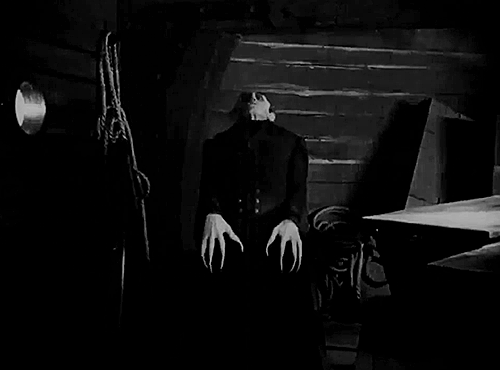
Mise-en-scène
What appears in the film frame.
In controlling the mise-en-scène, the director stages the event for the camera.
European art movement.
Sought to project inward subjectivity toward.
Representing the experience of the modern world.
Edvard Munch’s Skrik “The Scream”.
A response to modernity and the processes of modernization
Bureaucracy
Economy
Technology
Transportation
City
War.
Influence upon the camera
Max Reinhardt; leading theater producer in Berlin.
Chiaroscuro; treatment of light and shade, illusion of light and dark.
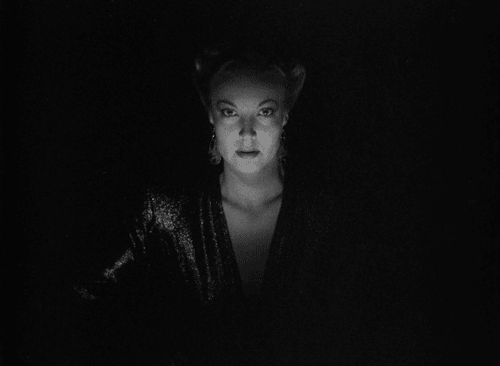
Features of expressionism in film
Style;
Distorted architecture.
Forced perspective.
Emphasis upon corridors and staircases.
Chiaroscuro.
Non-realistic performances.
Narrative;
Tales of the supernatural.
Demonic central figures.
Doppelgangers.

Nosferatu (1922)
Focus on the occult.
The birth of the horror genre ?
Confronting the horror of World War I ?
Realization of psyche as cinema.
Impact upon the camera
Hollywood gothic
Film noir
Contemporary TV.
Filmography (all links to full movie on YouTube)
-Nosferatu (1922) Dir. Murnau.
Recommended viewing (all links to full movie on YouTube)
-The Cabinet of Dr. Caligari (1920) Dir. Robert Wiene.
-Vincent (1982) Dir. Tim Burton.
Early fucking cinema (here)
The fucking cinema of attraction (here)
Narrative fucking continuity/integration (here)
Silent fucking comedies (here)
Soviet fucking montage (here)
Film fucking noir (here)
Hollywood fucking melodrama (here)
Direct fucking cinema and cinéma fucking vérité (here)
Fucking documentary (here)
New fucking Hollywood (here)
#ihatescriptwriting#film history#film historians#doing film history#german expressionism#nosferatu#the cabinet of dr. caligari#vincent#tim burton#film studies
27 notes
·
View notes
Text
SILENT FUCKING COMEDIES
1905 - 1927
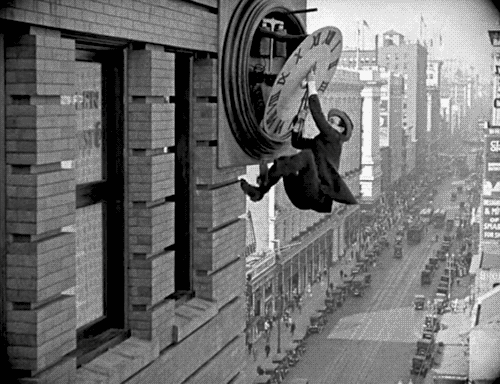
Beginning of the Vaudeville aesthetic.
Appeared in the early years of cinema.
Three great contributors; Charlie Chaplin, Buster Keaton and Harold Lloyd.
The first film projected to a wide audience, L’Arroseur Arrosé is a silent comedy.
Part of the first fictional narrative films.
“And if in the time of silent film there used to be a lot of good pictures with a lot of original ideas and subtle, witty plots, and there were some clumsy thoughts, but at least there were thoughts, and every once in a while you could find real life reflected on the screen, well now, that’s all come to an end.” -Ilya Ilf & Evgeny Petrov
Vaudeville aesthetic
Theatrical act.
Spectacular, fantastic.
Not telling a story.
Evolution
The Lumière Brothers’ films consisted of a single shot chronicling a gag.
Starting from 1905, the comedy was based around mischief gangs and chases.
Charlie Chaplin
Born on the 16th of April 1889.
The best known silent comedian.
His film, The Gold Rush (1925) still broke the fourth wall.

Buster Keaton
Born on the 4th of October 1895.
Performed all of his stunts without using any primitive form of CGI.
His film The General was filmed on an actual train.

Harold Lloyd
Born on the 20th of April 1893.
Performed of of his stunts without using any primitive form of CGI.
His film Safety Last ! was filmed on a 2 story building.
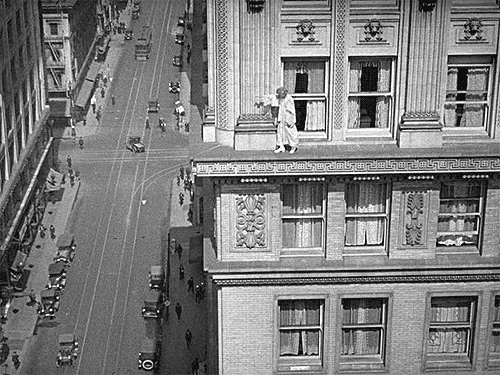
Filmography (all links to full movie on YouTube)
-L’Arroseur Arrosé (1895) Dir. The Lumière Brothers.
-The Gold Rush (1925) Dir. Charlie Chaplin.
-The General (1927) Dir. Buster Keaton.
-Safety Last (1923) Dir. Harold Llyod.
Early fucking cinema (here)
The fucking cinema of attraction (here)
Narrative fucking continuity/integration (here)
German fucking expressionism (here)
Soviet fucking montage (here)
Film fucking noir (here)
Hollywood fucking melodrama (here)
Direct fucking cinema and cinéma fucking vérité (here)
Fucking documentary (here)
New fucking Hollywood (here)
#ihatescriptwriting#film history#film historians#doing film history#silent cinema#silent comedy#silent comedies#the gold rush#the general#safety last#charlie chaplin#buster keaton#harold lloyd#film studies
2 notes
·
View notes
Text
NARRATIVE FUCKING CONTINUITY/INTEGRATION
1907 - 1913
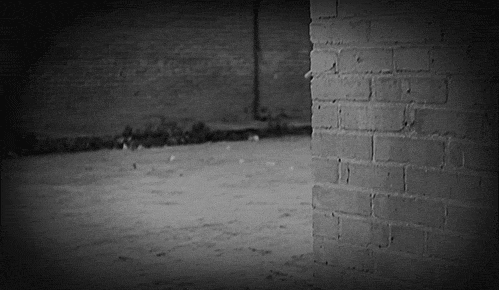
What is narrative continuity ?
Narrative = story
Continuity = linear fashion
Narrative continuity = telling a story in chronological order.
”When we’re in the story, when we’re part of it, we can’t know the outcome. It’s only later that we think we can see what the story was. But do we ever really know ? And does anybody else, perhaps, coming along a little later, does anybody else really care ?... History is written by the survivors, but what is that history ? That’s the point I was trying to make just now. We don’t know what the story is when we’re in it, and even after we tell it we’re not sure. Because the story doesn’t end.” -James Robertson, “And the Land Lay Still”
Why did a trend towards narrative continuity emerge in 1907 - 1913 ?
Emergence of permanent theaters
First full film reel
Stable film industry emerging.
Characteristics of narrative continuity;
Causality
Linear
Basic continuity editing
Actors looking into the camera becomes taboo
Dramatic expression
Focus on characterisation
Focus on the psychology of characters.
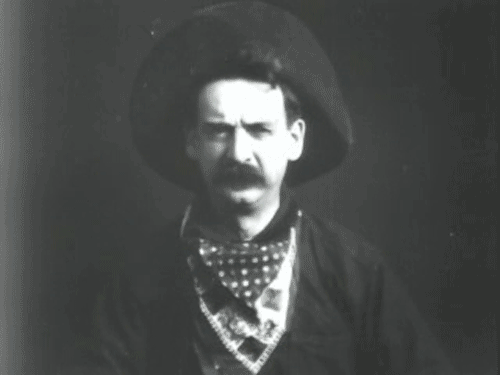
Continuity editing;
Narrative based editing;
Invisible
Continuous
Smooth transition
Temporal and spatial continuity;
Match on action
Cross-cutting/parallel action
Dissolves/fades
Establishing shots
180° rule
Eye-line match
Shot/reverse shot.
Cinema of narrative integration;
Longer films (early feature films)
A cinema of storytelling
A cinema of voyeurism
Use of close-ups, point of view shots and parallel editing
Emphasis on ‘telling’
Developing into an industry.
Celebrated figures of narrative film;
D.W. Griffith “The Father of narrative film“
Charlie Chaplin “The Teacher of us all”
Lillian Gish “The Pioneer of screen-acting”.

Biographe shorts;
The Adventures of Dollie (1908)
Movement from one location to an entirely different one (parallel editing)
Cut from one space to another one close by (interior to exterior)
Cut from one shot which includes space of the preceding shot (close up).
Parallel editing in D.W. Griffith’s films;
Cutting between two spaces in which actions are occurring simultaneously
Cutting between two spaces in which actions are not happening in the same time
Contrast
Conveying a character’s motivation
Joining characters separated by space.
Filmography (all links to full movie on YouTube)
-The Adventures of Dollie (1908) Dir. D.W. Griffith
Related films (all links to full movie on YouTube)
-The Great Train Robbery (1903) Dir. Edwin S. Porter.
-Rescued by Rover (1905) Dir. Cecil Hepworth.
-A Corner in Wheat (1909) Dir. D.W. Griffith.
-The Lonedale Operator (1911) Dir. D.W. Griffith.
-The Musketeers of Pig Alley (1912) Dir. D.W. Griffith.
-The Birth of a Nation (1915) Dir. D.W. Griffith.
-Intolerance (1916) Dir. D.W. Griffith.
-Broken Blossoms (1917) Dir. D.W. Griffith.
-Way Down East (1920) Dir. D.W. Griffith.
-Orphans of the Storm (1921) Dir. D.W. Griffith.
-The Kid (1921) Dir. Charlie Chaplin.
-The Gold Rush (1925) Dir. Charlie Chaplin.
Early fucking cinema (here)
The fucking cinema of attraction (here)
Silent fucking comedies (here)
German fucking expressionism (here)
Soviet fucking montage (here)
Film fucking noir (here)
Hollywood fucking melodrama (here)
Direct fucking cinema and cinéma fucking vérité (here)
Fucking documentary (here)
New fucking Hollywood (here)
#ihatescriptwriting#film history#film historians#doing film history#narrative continuity#narrative integration#the kid#the great train robbery#the lonedale operator#the birth of a nation#charlie chaplin#edwin s. porter#dw griffith#film studies
1 note
·
View note
Text
THE FUCKING CINEMA OF ATTRACTION
1895 - 1906
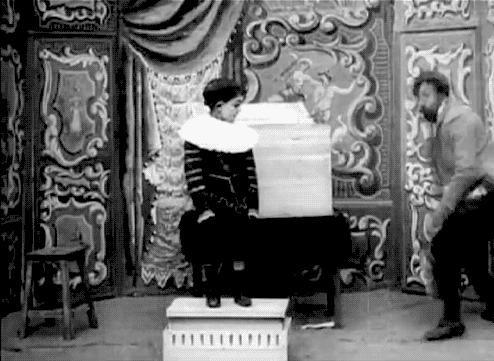
After seeing Abel Gance’s La Roue (The Wheel), Fernand Léger realises the potential of cinema as an act of showing and exhibition. Early modernists (futurist, dadaists and surrealists) are as enthusiastic as Léger about cinema which is an expansion of theater and literature. The cinema of attraction was the most popular film genre before 1906, it mostly consisted of magical attractions.
“A cinema that displays its visibility or ruptures a self-enclosed fictional world for a chance to grab the audience’s attention.” -Tom Gunning
Cinema of spectacle.
Exhibitionist rather than voyeuristic.
Direct engagement with the spectator.
Breaking of the fourth wall.
Confrontation rather than absorption.
Long takes, tableau staging and little editing.
Emphasis on ‘showing’.
Technology as a spectacle itself.
Pleasure through spectacle.
Whatever happened to the cinema of attraction ?
It suited some genres better than others.
It became part of avant-garde cinema.
We can still see it in art films.

In Vaudeville, theatrical display dominates over narrative absorption. The cinema of attraction expends little energy creating characters with psychological motivations or individual personality. Georges Méliès and Edwin S. Porter used cinema as a storytelling medium.
“As for the scenario, the “fable” or “tale”, I only consider it at the end. I can state that the scenario constructed in this manner has no importance, since I use it merely as a pretext for the “stage effects”, the “tricks”, or for a nicely arranged tableau”. -Georges Méliès
The Lumière Brothers and Méliès are not the opposition between narrative and non-narrative film-making, rather they had a common basis, one that differs from the primary spectator relations set up by narrative film after 1906; the cinema of attraction.
Filmography (all links to full movie on YouTube)
-La Roue (1923) Dir. Abel Gance.
Early fucking cinema (here)
Narrative fucking continuity/integration (here)
Silent fucking comedies (here)
German fucking expressionism (here)
Soviet fucking montage (here)
Film fucking noir (here)
Hollywood fucking melodrama (here)
Direct fucking cinema and cinéma fucking vérité (here)
Fucking documentary (here)
New fucking Hollywood (here)
#ihatescriptwriting#film history#film historians#doing film history#early cinema#silent cinema#la roue#abel gance#georges méliès#film studies
12 notes
·
View notes
Text
EARLY FUCKING CINEMA
??? - 1920
In what year was cinema invented ? Was it in 1888 when the oldest, 2 sec long, celluloid film Roundhay Garden Scene was made ? In 1895 when the Lumière brothers projected their film L’Arroseur Arrosé (The Sprinkler Sprinkled) in Paris ? It could have been in 1908 when the Pathé society opened the first actual cinema ever ? Or in 1914 when Le Monde, la Chair et le Diable (The World, the Flesh and the Devil), the very first film in colour was shown in London ?
It’s hard to date when exactly cinema appeared since even the definition of ‘film’ is vague; contrary to popular belief, a film doesn’t have to be shot on a camera, be in colour or be shown to a wide audience.
“The cinema is far more than an apparatus, and it was not invented: it growed.” C.W. Ceram
Cinema is the result of;
Scientific developments.
Industrial developments.
Aesthetic developments.
Silent cinema;
Silent cinema makes up about the first 30 years of cinema history.
80% of silent films were lost due to nitrate deterioration.
Silent films were neither in black and white nor silent.
What was needed to invent cinema ?
Vision; the eye is able to perceive movement if a series of slightly different images is placed before it in a rapid succession.
Projection; being able to project an image on a screen.
Photography; Nicéphore Niépce invents photography in 1826, Henry Fox Talbot invents salt prints in 1834 and Louis Daguerre invents the Daguerreotype in 1837.
Film stock; invented by George Eastman in 1889.
Pre-cinema optical toys;
Phénakistiscope; by Joseph Plateau in 1833.
Thraumatrope; by William Henry Fitton in 1864.
Zoetrope; by William Ensign Lincoln in 1865.
Praxinoscope; by Charles Émile Reynaud in 1877.
Zoöpraxiscope; by Eadweard Muybridge in 1879.
Phantoscope; by Charles Francis Jenkins in the early 1890′s.

The great precursors of cinema;
Eadweard Muybridge (1979).
Charles Émile Reynaud (1877).
Étienne Jules Marey (chronophotography 1882).
The inventors;
Thomas Edison
Max Skladanowsky
Auguste and Louis Lumière
Robert W. Paul
Birt Acres.
Filmography (all links to full movie on YouTube)
-The Modern Times (Factory scene YouTube) (1936) Dir. Charlie Chaplin.
-Roundhay Garden Scene (YouTube) (1888) Dir. Louis LePrince.
-L’Arroseur Arrosé (YouTube) (The Sprinkler Sprinkled) (1895) Dir. The Lumière Brothers.
-Le Monde, la Chair et le Diable (The World, the Flesh and the Devil) (1914) Dir. Unknown.
The fucking cinema of attraction (here)
Narrative fucking continuity/integration (here)
Silent fucking comedies (here)
German fucking expressionism (here)
Soviet fucking montage (here)
Film fucking noir (here)
Hollywood fucking melodrama (here)
Direct fucking cinema and cinéma fucking vérité (here)
Fucking documentary (here)
New fucking Hollywood (here)
#ihatescriptwriting#film history#film historians#doing film history#early cinema#silent cinema#charlie chaplin#the modern times#roundhay garden scene#l'arroseur arrosé#le monde la chair et le diable#lumière brothers#film studies
0 notes
Text
HOW THE FUCK DO YOU USE PROPS ?
props, like furniture, are always present, they can be silent or can be used to give further depth to the character and plot
They are often used to show a character’s inner world, unlike feelings, they speak visually. Props are mobile and often return at some point in the movie.
-Barton Fink (1991).
The squeaky bed; when Barton enters, he tosses his suitcase on the bed. The bed springs squeak unusually loudly. It’s as though the soundtrack is signaling that the bed is going to be important. Later Barton finds a dead woman in it.

The sealed window; when Barton tries the window, it too comments. The window is stuck, like Barton. Barton can’t leave until his story is done.
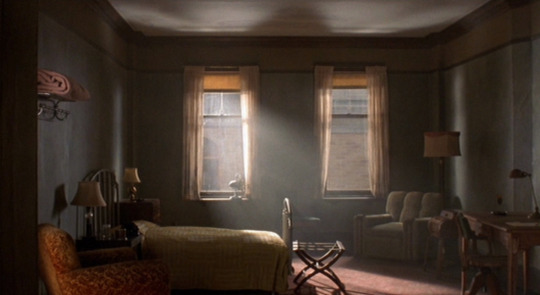
The typewriter; the typewriter is introduced with a close-up. We hold on it because it represents the movie’s central conflict.

The pad of paper and pencil; on the desk, there is a pad with the Hotel Earle’s tagline, “A Day or a Lifetime.” This implied question becomes more important as the film goes on. When Barton moves the pencil on the pad, the paper beneath it is white, the paper around it is yellowed. Unlike Barton, no one has used this pencil in this room for years. This underscores that writers are outsiders in the Hotel Earle. Later when Barton brings a writer to his room, she is killed.

The postcard; the girl on the postcard is Barton’s muse, a fantasy projection. Again the sound track tells us this is important by laying crashing waves and gulls beneath the image.
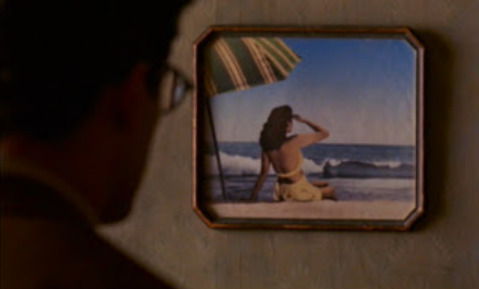
They can be a reflect of a character’s deep thoughts or mental state.
-Raging Bull (1980).
By midpoint in the movie, prizefighter Jake La Motta has began to lose his way. He is increasingly paranoid of all those around him. In this scene, Jake is at home adjusting the picture oh his TV. At first, the TV signal is intermittent, as is Jake’s sanity. When Jake’s wife enters and kisses Jake’s brother on the cheek, Jake’s paranoia is set off. Now the TV goes completely haywire.

Repurposing; changing a prop’s meaning throughout the movie. For example, the prop means “hope” in act 1, “imprisonment” in act 2 and “hope” again in act 3. Mining props from earlier scenes is tougher and far more powerful than adding new props along the way.
-Bound (1996).
In this brilliant noir love triangle, garden clippers are used by the mob in Act One to dismember one of their own for stealing.

Later in the film, one of the main characters, Ceasar, who is also a mobster, borrows the technique to threaten his wife and his wife’s lover, Corky.
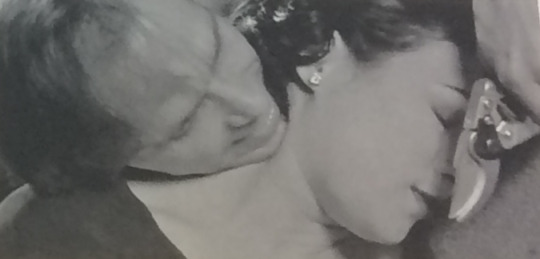
But at the end of the film, Corky, who has become Ceasar’s next victim, frees herself with the same clippers.

Filmography;
-Barton Fink (1991) Dir. The Coen Brothers.
-Raging Bull (1980) Dir. Martin Scorsese
-Bound (1996) Dir. Lilly and Lana Wachowski.
Sources; Cinematic Storytelling: the 100 Most Powerful Film Conventions Every Filmmaker Must Know
#ihatescriptwriting#scriptwriting#screenwriting#screenplay#writing#creative writing#props#guide#writing guide#cinematography#barton fink#raging bull#bound
2 notes
·
View notes
Text
HOW THE FUCK DO YOU USE COLOUR ?
colour coding isn’t as bloody complex as it sounds, in fact you’ve been accustomed to it ever since you were a kid and didn’t even realize it. from colour coding characters to feelings as well as showing development, let me show you a few examples
Colour coding characters;
It can be used in kid’s shows to help young audiences remember characters by linking them to a concept they already know; colours.
-Balamory (2002-2005).
The main characters wear the same colour their house is painted in.


-Power Rangers (1993- ).
Since we can’t see the characters’ faces while they are wearing their fighting suits, they are identifiable by the colour they wear.


The same concept can be used to differentiate characters that otherwise look too similar.
-Reservoir Dogs (1992).
The characters in Reservoir Dogs are named after colours in stead of names since it is easier to remember them.


Or to have a character match their aesthetic and give the tone about their personality.
-Pieles (Skins) (2017).
The characters’ colour in this film is usually either pink or purple to differentiate them from other “normal” people.

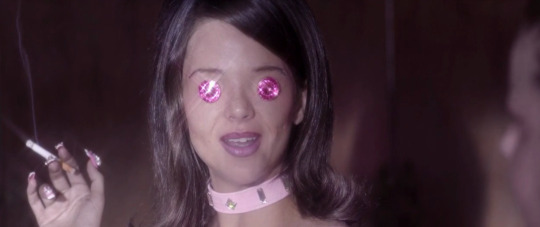

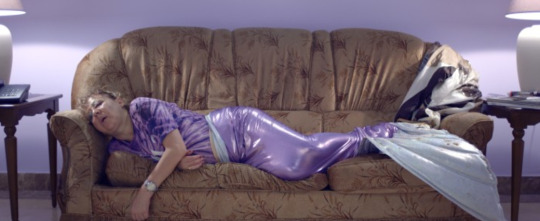
Colour coding character development;
-Three Women (1997).
Let’s take Three Women as an example; Pinkie Rose (Sissy Spacek) enters the film wearing a pale flesh colour. She is like a blank canvas in search of a livable identity.

She meet Millie (Shelley Duvall) who becomes her idol.
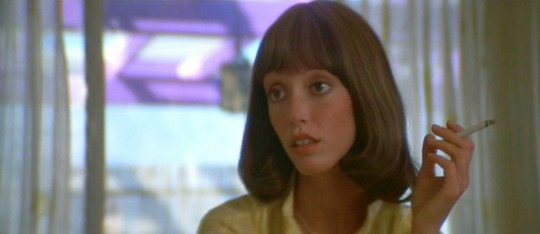
Pinkie takes over Millie’s persona and becomes identified with Millie’s yellow.

After surviving a coma, Pinkie rejects Millie and returns to pink, only this time it’s hot pink.

Pinkie and Millie both enter Willie’s world of desert, sun-bleached colours.

Their theft of Willie’s colour means they are now members of her family and have now found a “home”. Pinkie has become Willie’s grandchild, and Millie, Willie’s daughter.

-Body Heat (1981).
Matty Tyler Walker starts the film innocently dressed in white but then wears a red skirt, synonym of danger.

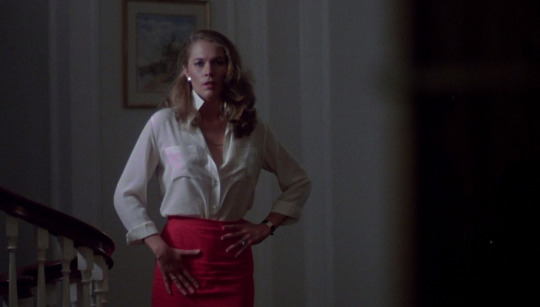
Colour coding feelings;
It has been proven that our brains subconsciously link colours with specific emotions so filming a scene using a monochromatic tone can have an impact on the audience’s perception of what’s to come.
Green; life, renewal, nature, energy, growth, rebirth, hope, harmony, freshness, safety, fertility, environment, ambition, finances, Wall Street, banking, money, jealousy, greed. Green can help enhance vision, stability and endurance, it can also stand for both a lack of experience and need for growth, it is soothing, relaxing, youthful and has healing powers. It is the dominant colour in nature and the most restful, relaxing colour for a human eye to view, it helps alleviate anxiety, depression, and nervousness.
-La La Land (2016).
Ambition.

Yellow; sunshine, hope, happiness, positivity, clarity, energy, warmth, cheerfulness, optimism, enlightenment, remembrance, intellect, honour, loyalty, joy, spontaneity, instability, cowardice, deceit, caution, sickness and jealousy. Yellow helps activate the memory, encourage communication, enhance vision, build confidence, and stimulate the nervous system. Bright yellow is an attention getting colour, it is often associated with food and is highly used in children’s products and marketing advertisements aimed at children.
-Birdman (2014).
Instability.

Orange; flamboyance, joy, warmth, heat, sunshine, enthusiasm, creativity, success, encouragement, change, determination, health, stimulation, happiness, fun, enjoyment, balance, sexuality, freedom, expression, fascination, joy and creativity. Orange promotes a sense of general wellness and emotional energy that should be shared, such as compassion and passion.
-Nymphomaniac (2013).
Sexuality.

Red; love, sensitivity, romance, joy, enthusiasm, excitement, assertiveness, strength, confidence, leadership, power, courage, determination, dare, energy, vigor, willpower, impulse, desire, passion, radiance, sexuality, longing, lust, vibrance, action, malice, heat, fire, stress, danger, blood, anger, wrath and rage. Red creates physical effects such as elevated blood pressure, enhanced libido, increased respiratory rates, enhanced metabolism, increased enthusiasm, higher levels of energy, and increased confidence. It is a highly visible colour that is able to focus attention quickly and get people to make quick decisions,
-Cat People (1982).
Danger.

Pink; sweet, nice, playful, cute, romantic, charming, feminine, tender, love of oneself and of others, friendship, affection, harmony, inner peace, and approachability. Pink is the sweet side of the colour red. While the colour red stirs up passion, aggression, and action, large amounts of the colour pink can actually create physical weakness.
-Blade Runner 2049 (2017).
Approachability.

Purple; royalty, nobility, luxury, power, ambition, wealth, extravagance, creativity, wisdom, dignity, grandeur, devotion, peace, pride, mystery, independence, magic, spirituality, the sacred, higher self, passion, third eye, fulfillment, vitality, gloom, sadness, frustration. Purple has a variety of effects on the mind and body, including uplifting spirits, calming the mind and nerves, enhancing the sacred, creating feelings of spirituality, increasing nurturing tendencies and sensitivity, encouraging imagination and creativity.
-The Florida Project (2017).
Vitality.

Blue; freedom, intuition, imagination, expansiveness, inspiration, depth, trust, loyalty, sincerity, wisdom, confidence, stability, faith, heaven, spirit, rest, tranquility, dynamism, drama, exhilaration, intelligence, stability, unity, conservatism, piety, sincerity, peace, significance, importance, confidence, coldness, carelessness, melancholy, negativity, sadness, self-righteousness, self-centeredness, suspicion, depression, stubbornness, timidity and unreliability. Blue has positive affects on the mind and the body, as the colour of the spirit, it invokes rest and can cause the body to produce chemicals that are calming and exude feelings of tranquility, it helps to slow human metabolism, is cooling in nature, and helps with balance and self-expression.
-The Truman Show (1998).
Freedom.

Filmography;
-Balamory (2002-2005) Prod. Brian Jameson.
-Power Rangers SPD (2005) Prod. Sally Campbell and Charles Knight.
-Reservoir Dogs (1992) Dir. Quentin Tarantino.
-Pieles (Skins) (2017) Dir. Eduardo Casanova.
-Three Women (1977) Dir. Robert Altman.
-Body Heat (1981) Dir. Lawrence Kasdan.
-La La Land (2016) Dir. Damien Chazelle.
-Birdman (2014) Dir. Alejandro González Iñárritu.
-Nymphomaniac (2013) Dir. Lars Von Trier.
-Cat People (1982) Dir. Paul Schrader.
-Blade Runner 2049 (2017) Dir. Dennis Villeneuve.
-The Florida Project (2017) Dir. Sean Baker.
-The Truman Show (1998) Dir. Peter Weir.
Sources; colorpalette.cinema on instagram; meaning of colors; Cinematic Storytelling: the 100 Most Powerful Film Conventions Every Filmmaker Must Know (book)
#ihatescriptwriting#filmmaking#film#art#colours#colors#cinematography#composition#aesthetic#balamory#power rangers#reservoir dogs#pieles#three women#body heat#la la land#birdman#nymphomaniac#cat people#blade runner 2049#the florida project#the truman show
1 note
·
View note
Text
HOW TO WRITE A FUCKING SCRIPT YOU COULD SUBMIT TO A FUCKING PRODUCER - MASTERPOST
oh you thought you could just write a fucking story and send it to a producer ? well no sweatie that would be way too easy, good bloody job i’m here to save you lot from embarrassment, yeah you’re welcome, let me teach you a thing or two, actually 6, about the format if which you are meant to send your scripts in if you want them to even be read
first, you need a pitch
WRITING A PITCH FOR YOUR DAMN FILM
The pitch, or “one line-pitch”, is a simple and short sentence which summarizes the main idea of your film.
It must be able to briefly answer the question; “What is it about ?”.
It has to clearly introduce the main character, the major issue which starts the story and the “genre” of the film.
The main conflict of the film will appear in the pitch.
Examples;
“The rise and fall of a Cuban gangster in the Miami of the 1980′s.”
-Scarface (1983) Dir. Brian de Palma.
“A man with a sound mind who rebels against society voluntarily ends up in a mental institution to avoid jail.”
-One Flew Over the Cuckoo’s Nest (1975) Dir. Milos Forman.
“A famous author is kept captive by one of his crazy fans who asks him to rewrite a book for her.”
-Misery (1991) Dir. Rob Reiner.
then you will need a synopsis
WRITING A SYNOPSIS FOR YOUR DAMN FILM
The synopsis is a summary of your story in a couple of lines. In other words, it’s a developed version of the pitch.
It is a document that can be between four lines and a page and a half maximum.
The main characters of the story appear and are named, we also get information about the place and the time in which it is set.
Sometimes a producer will abandon the reading of your project because of the cost of such a film, keep this in mind.
If you want to add suspense for your reader and make them read your story till the end, don’t reveal the ending in your synopsis.
In the cases of longer synopsis, the three act structure is revealed.
Examples;
“2020. In a post-apocalyptic world, the few survivors live under the threat of creatures that are very sensitive to sounds. They must thus remain in silence. Midwestern family will struggle to survive, with a mother about to give birth.”
-A Quiet Place (2018) Dir. John Krasinski.
“With her journalism degree in hand, Andrea arrives in New York where she gets her first job as the assistant editor-in-chief of a prestigious fashion magazine. A dream job in appearance only because her boss is actually a tyrannical and temperamental monster; Andrea, who sees her new job as a stepping stone to an great career as a journalist, decides to endure the abuse of her devilish boss.”
-Devil Wears Prada (2006) Dir. David Frankel.
“An unusual event will mark the life of the young Gordie Lachance. In the summer of 1959, a teenager mysteriously disappeared in Oregon. Gordie and his inseparable friends Chris, Teddy, and Vern know he died because he approached the railroad too closely and a train hit him. They leave for the great forest of Castle Rock in search of information.”
-Stand by Me (1986) Dir. Rob Reiner.
you will also need a step outline
BUILDING YOUR DAMN STEP OUTLINE
The step outline is a very important tool to the scriptwriter once the synopsis is in place.
It is a fairly long document in which you will summarize each of the sequences of your film in a few simple sentences.
Every character appears in the step outline, the side stories are mentioned and so are the decors.
Often, young screenwriters, once their synopsis is written, immediately start writing the screenplay, which they will later regret.
By completely developing the story, without the obstacles that are the dialogues and the descriptions, and by focusing solely on the narrative structure, the ups and downs of the story, the author can focus on the story’s problems and how to solve them.
You will only detail the descriptions of the decors, the secondary characters and work on the dialogues in depth later.
Example;
“AIRPLANE CABIN - EVENING
It’s Christmas and JOHN MCCLANE is sitting nervously amongst the passengers as the plane comes in to land. The salesman next to him can see he’s anxious and explains that he’s been business travelling for nine years and in that time has found that the best way to get over jet lag is to make fist with your toes !
McClane takes it on board and gets his belongings together, inadvertently revealing the butt of his HANDGUN. The salesman looks nervous until McClane explains that he’s a New York DETECTIVE and has been doing it for eleven years.
The scene establishes our protagonist as being “only human” and adds a little light comic relief. The fact that McClane has a sense of humour is important to the audience empathizing with his later reaction to dramatic and potentially hazardous events.”
-Die Hard (1988) Dir: John McTiernan.
followed by a treatment
YOUR DAMN TREATMENT
The treatment could be seen as a more “literary” version of the step outline, meaning it contains more details but still no dialogues.
Write each sequence as a separate paragraph. Sequences don’t need to be numbered.
Example;
“Deep Space. The eerie blue-green planet of Aquilae slowly drifts into view. A small speck, orbiting the planet, glints in the light of a nearby star.
Suddenly a sleek fighter-type spacecraft settles ominously into the foreground moving swiftly toward the orbiting speck. Two more fighters silently maneuver into battle formation behind the first then three more craft glide into view. The orbiting speck is actually a gargantuan space fortress which dwarfs the approaching fighters. Fuel pods are jettisoned. The six fighters break off into power dive attack on the huge fortress. Lazer bolts streak from the fighters creating small explosions on the complex surface of the fort. Return fire catches one of the fighters and it bursts into a million pieces. Another of the craft plows into a gun emplacement jutting from the fortress causing a hideous series of chain reaction explosions. The chaos of battle echoes through the vastness of space.“
-Star Wars (1977) Dir: George Lucas.
you’ll wanna add a statement of intent
YOUR DAMN STATEMENT OF INTENT
It is a document that is about a page and a half, two pages maximum.
It must clearly state the reasons why you wrote your script and the kind of mise-en-scène you wish for your story.
You must right it using the first person.
First explain how the idea came to you in the first place then develop what this film personally means to you.
Do not write long sentences just to fill gaps.
You must defend the importance of your story, how original your point of view is and the impact the film could have on the audience.
Explain how you think the film should be made.
You are allowed, and advised to, quote famous references.
The statement of intent isn’t a way for you to show off your knowledge, but a way to show that you know your story perfectly.
Example;
“Dear Director of Development;
I wish to submit my feature length comedy screenplay, Dish Dogs, to you for consideration.
Dish Dogs is the story of two college graduates, fed up with society and eager to gain some measure of free will; so they drive around the country in a 1958 Ford pick-up truck washing dishes. It’s Easy Rider meets The Graduate for a new generation.
I’m a produced screenwriter and have optioned and sold many scripts over the last few years. I recently sold a film noir screenplay, Rushlights. It stars Josh Henderson, Beau Bridges, Aidan Quinn, and Haley Webb (http://www.imdb.com/title/tt1536437/). And before that I sold Man Overboard, a broad comedy screenplay. It’s currently in rotation on cable television and can be found in video stores across the country including Netflix and Amazon.com (http://www.imdb.com/title/tt1186829/).
My website, www.ashleymeyers.com, has synopses for many of my other screenplays. If you like my writing style but the above mentioned script does not quite fit your current needs check out my website and let me know if you’d like to read any of my other scripts.
Thank you for your time and consideration. Please let me know if you would like to read the full screenplay and I’ll get you a copy immediately.
Ashley Scott Meyers”
-Dish Dogs (2000) Dir. Robert Kubilos.
finally you can actually write your screenplay
YOUR ACTUAL DAMN SCRIPT
You will have to divide your film into sequences.
Writing dialogues can be done by a separate screenwriter who specializes in writing dialogues.
CUTTING INTO SEQUENCES
The scene heading of each sequence always shows in this order;
1/INT-SHARON’S ROOM-DAY
-(1/) the number of the sequence
-(INT) if the scene takes place in interior (INT) or in exterior (EXT)
-(SHARON’S ROOM) the name of the place and the name of the owner of the place
-(DAY) if the scene takes place during daytime or nighttime.
As soon as there is a change in time or place, the number of the sequence changes.
In screenwriting, a page more or less corresponds to a minute of film.
The ideal number of pages for a script is more or less 90.
As soon as a film enters a production process, someone will have to read the script with a stopwatch to know exactly how long the film will be.
DESCRIBING
The sciptwriter must describe the locations, the characters, the actions and write the dialogues for each sequence.
The only time used is the present.
It is recommended to also attach sketches of the scenes.
Forget all psychological aspect, all information must be shown through actions or dialogues.
As a scriptwriter you have every element of your film in your hands; your only concern is how to “distribute” it to your audience.
Giving information doesn’t mean oversaturating your audience’s mind.
When a decor keeps coming back in your film, you can describe it with more and more detail each time.
The script, in the best of cases, must let the audience understand elements of the characters’ psychology without using dialogue or voice-over.
You must create meaningful scenes, where information is given to the audience without them even realizing it. Scenaristic suggestion must be your goal.
The audience should be able to get into a character’s head without hearing a voice-over which tends to sound too superficial.
Watch as many silent films as possible.
Reread a sequence after you have taken all of the dialogues out, see how the scene works without them.
NAMING
The number one rule of screenwriting is that the names of the characters are written in capital letters the first time they are mentioned.
Then it will not appear in capitals again except in dialogues.
Screenwriters must be smart, you should have a few scenes where characters are seen and called by their name so your audience can remember them more easily;
You could have another character mention them by their name
The character’s name could appear on screen one way or another
The film could be named after the main character
A voice over could introduce the character to us.
INTRODUCING THE DIALOGUES
The name of the character appears in all caps, in the centre of the page, the dialogue is two tabulations away from the right side of the page (”tab” key).
On the right side of the character’s name, in italic, stage directions may appear.
Don’t add too many stage directions, at the end of the day, the actor acting out the dialogue should have a minimum of freedom to interpret it.
When one of the characters who is talking is not on the scene’s location, it must have the word “OS” (off-screen) in brackets.
Sometimes it can be hard to be good at writing screenplay and dialogues, write your film in its entirety and only write the big lines of the dialogues then collaborate with another person.
USING MUSIC
Diegetic music;
Music is said to be “diegetic” when it comes from a source present in the scene itself (radio, headphones, television...).
It is also a means for the screenwriter to indicate to the audience the era in which the film takes place.
When it comes to writing about it, the screenwriter simply needs to mention where the music is coming from and the name of the song.
Remember that using music in a film may cause copyright issues.
Also it is not rare to see instances in which music starts as diegetic music and continues as extradiegetic music in the next scene.
Extradiegetic music;
Music is considered as “extradiegetic” when its source is exterior to the film’s scene (the characters don’t actually here the music).
DO NO MIX SCREENWRITING AND TECHNICAL BREAKDOWN
The technical breakdown shows the film’s shots and camera movements.
Words such as “close-up” or “dolly shot” shouldn’t appear in the script.
There are three different ways a screenwriter can collaborate with a “major” studio;
The first one is if a studio asks for a screenwriter to write a film on a specific subject
The second one concerns a screenwriter who wrote a film and wants to sell it to a studio but don’t want to make it them self
And the third one is when a screenwriter wrote a film and wants to make it them self.
As soon as the script is being written, you must know what you will get to choose and what will be chosen by the director, even if you are convinced that you will be directing your own film.
Examples;
“CUT TO:
1/EXT-L STREET BAR & GRILLE, SOUTH BOSTON-EVENING
The bar is dirty, more than a little run down. If there is ever a cook on duty, he’s not here now. As we pan across several empty tables, we can almost smell the odor of last night’s beer and crushed pretzels on the floor.
CHUCKIE
Oh my God, I got the most fucked up
thing I been meaning to tell you.
As the camera rises, we find FOUR YOUNG MEN seated around a table near the back of the bar.
ALL
Oh Jesus. Here we go.”
-Good Will Hunting (1997) Dir. Gus Van Sant.
“FADE IN:
1/INT-CADY’S ROOM-EARLY MORNING
There are boxes around the undecorated room. The clock says 6:29 am.
CADY HERON, 15, lies in bed asleep. She is naturally pretty. Her long hair has never been dyed. Her eyebrows have never been plucked.
The clock hits 6.30 and the alarm goes off. Cady opens her eyes.
CADY (groggy)
Okay, I’m up.
Cady closes her eyes for what seems like a second. When she opens them again, the clock says 7:15.
Cady screams and jumps out of bed.”
-Mean Girls (2004) Dir. Mike Waters.
“EMPTY ROOM WITH SINGLE CHAIR
We hear a DOOR OPEN and CLOSE, followed by APPROACHING FOOTSTEPS. DANNY OCEAN, dressed in prison fatigues, ENTERS FRAME and sits.
VOICE (O.S.)
Good morning.
DANNY
Good morning.
VOICE (O.S.)
Please state your name for the
record.
DANNY
Daniel Ocean.”
-Ocean’s Eleven (2001) Dir. Steven Soderbergh.
well here you go, writing a screenplay in this order should be easier than just starting with the script, if you make sure to present your project containing all of that information you should at least manage to get a producer to read you, which means that the only reason why they would reject your work would only be due to the lack of quality of your script
good luck bitches
Part 1 (pitch) here
Part 2 (synopsis) here
Part 3 (step outline) here
Part 4 (treatment) here
Part 5 (statement of intent) here
Part 6 (script) here
#ihatescriptwriting#scriptwriting#screenwriting#script#pitch#synopsis#stepoutline#step outline#treatement#statement of intent#statement of purpose#writing guide#guide#howto#writing#creative writing#cinema#films#filmmaking#art#scarface#one flew over the cuckoo's nest#misery#a quiet place#devil wears prada#stand by me#die hard#star wars#dish dogs#good will hunting
5 notes
·
View notes